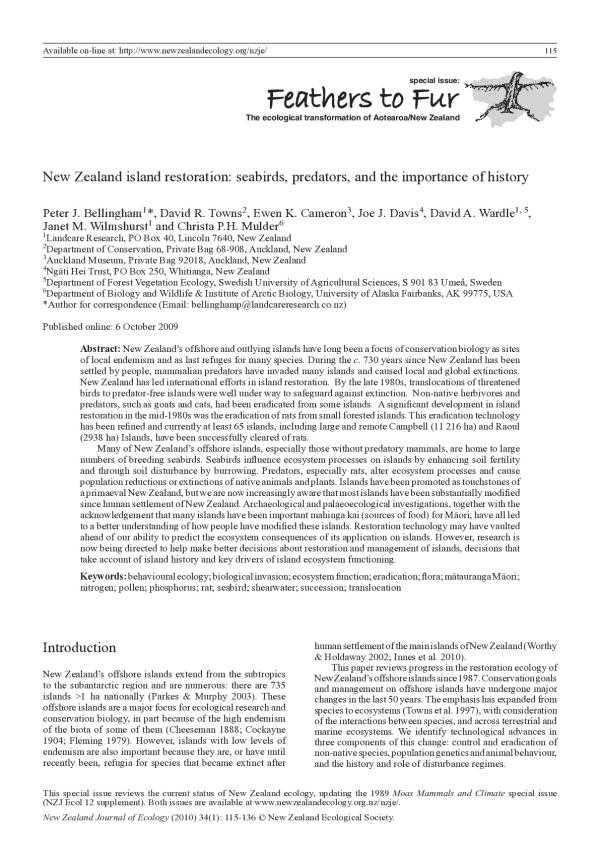Localisation
SPREP LIBRARY
Année de publication:
2009
Lieu de publication
UNKNOWN
Numéro d'appel
[EL]
Pays concernés
Pacific Region
Worldwide
Type de contenu
Langue
English
Identifiant de dossier:
443
Ancien numéro d'identification PEIN:
81895
Notes générales
copy of pdf for uploading
Disponible en ligne
Rubrique(s) thématique(s)
Invasive species - Management - New Zealand
Résumé
New Zealands offshore and outlying islands have long been a focus of conservation biology as sites of local endemism and as last refuges for many species. During the c. 730 years since New Zealand has been settled by people, mammalian predators have invaded many islands and caused local and global extinctions. New Zealand has led international efforts in island restoration. By the late 1980s, translocations of threatened birds to predator-free islands were well under way to safeguard against extinction. Non-native herbivores and predators, such as goats and cats, had been eradicated from some islands. A significant development in island restoration in the mid-1980s was the eradication of rats from small forested islands. This eradication technology has been refined and currently at least 65 islands, including large and remote Campbell (11 216 ha) and Raoul (2938 ha) Islands, have been successfully cleared of rats. Many of New Zealands offshore islands, especially those without predatory mammals, are home to large numbers of breeding seabirds. Seabirds influence ecosystem processes on islands by enhancing soil fertility and through soil disturbance by burrowing. Predators, especially rats, alter ecosystem processes and cause population reductions or extinctions of native animals and plants. Islands have been promoted as touchstones of a primaeval New Zealand, but we are now increasingly aware that most islands have been substantially modified since human settlement of New Zealand. Archaeological and palaeoecological investigations, together with the acknowledgement that many islands have been important mahinga kai (sources of food) for M?ori, have all led to a better understanding of how people have modified these islands. Restoration technology may have vaulted ahead of our ability to predict the ecosystem consequences of its application on islands. However, research is now being directed to help make better decisions about restoration and management of islands, decisions that take account of island history and key drivers of island ecosystem functioning.
Espèces:
Localisation
SPREP LIBRARY
Année de publication:
2009
Lieu de publication
UNKNOWN
Numéro d'appel
[EL]
Pays concernés
Pacific Region
Worldwide
Type de contenu
Langue
English
Identifiant de dossier:
443
Ancien numéro d'identification PEIN:
81895
Notes générales
copy of pdf for uploading
Dossier créé: 14-Aug-2018
Dossier modifié: 09-Jan-2024

